 Do you know your book marketing strategy from your book marketing tactics? The difference is quite important. Think about it in terms of what you intend to achieve (strategy) and how you are going to achieve it (tactics). Tactics are shorter term and you may need to change them if they aren’t working. But strategy is a longer term thing. If you keep changing strategy every five minutes, you are unlikely to achieve anything. But you can’t decide on your strategy until you have first defined your goals. The connectivity between goals, strategy and tactics is often described in business speak as “getting your ducks in a row”.  What follows is used for illustration purposes only. We are not advocating any particular marketing strategy. That is for you to decide, based on your own goals. As an Indie author you probably know your major goal. It will be to sell as many books as possible (that may not actually be the goal for some authors. They may just want to write books and aren’t concerned with sales. But because you are reading a nook marketing blog, we’ll assume you want to sell books). That probably won’t be your only goal. We’ll stick a pin in the “Sell as many books as possible” goal, because we know that’s always going to be there. So, what other goals might you have?  Well, you may not want to spend a lot of money on marketing in order to sell your books, so there may be a goal related to achieving the major goal as cheaply as possible. You may also have a goal to build a loyal fanbase in order to make sure that you are able to make sales of future books, without having to start from scratch every time you launch one. You may have other ideas about your publishing goals. By all means add those to your personal list of goals.  “Selling lots of books” and “Not spending any money on marketing “ may be conflicting goals and your strategy may be unable to deliver both, so you may have to re-think which goal you want to achieve and remove the competitor so as not to get into any strategic conflicts. Having decided on your goals, you can now consider what strategy you must use to achieve those goals. Note the use of the singular version of the word. You may have several goals, but you only ever have one strategy. And if that strategy can’t deliver all your goals, you’ll have to reconsider your goals and perhaps prioritise them. Why only one strategy?  Because if you have more than one you will have difficulty focusing your efforts and resources on achieving your goals. If you divide your resources between strategies then it is likely that you won’t have enough resources to achieve all your goals. The two strategies may even be pulling in different directions, You create competition for yourself about what you consider to be most important. That is why I said that you have to consider your goals carefully, so that you focus on what is most important, rather than trying to achieve everything and ending up achieving nothing. Goals and strategy have to be aligned. For example, if your goal is to spend as little as possible on marketing your book, having a strategy based on paid advertising is contrary to your goal. Instead of achieving your goal, you will fail to achieve it – spectacularly.  So, let’s pick out one of the goals I suggested above: to spend as little as possible on the marketing of your books. One possible strategy for that is to use social media for your marketing, as that is free. So, your strategy is now aligned to your goal. Now you can think about your tactics. You might have several of these all directed by the same strategy. Tactic 1 might be to build up a following of readers on X (formerly Twitter) who will see your marketing messages and buy your books.  Tactic 2 might be to create great videos which you can use to market your books for free using TikTok and Instagram. Maybe even Facebook and X too. Tactic 3 might be to create “reader magnets” so you can build an email list, so you have a fanbase who have bought your current book and who are ready and waiting for news about your next book. Are those tactics aligned to your strategy? Yes, because 1. They all use social media (except the email list). 2. They are all free (except the email list). 3. They are proven ways of selling books.  What about that email list? To do this effectively you will normally have to subscribe to a suitable email management app, such as Mail Chimp or Mailerlite. Those subscriptions aren’t too expensive (certainly not as expensive as advertising) so they do align to spending as little money as possible. They only fail to align if the goal was “spend no money at all”. All you have to do now is implement those tactics and see if they are going to achieve your other goal of selling books.  What happens if they don’t achieve that over-arching goal of book sales? Well, in the first instance, you don’t change your strategy (at least, not yet). You have to identify why those tactics aren’t achieving your goals, and that means analysing your results. All your results. For tactic 1, for example you would have to dive into your X engagement data to find out how many people are reacting to your posts. Not just in terms of clicks to your book’s sales page, but in terms of likes and shares.  But you also have to identify how many of your followers are engaging in conversations with you, because it is engaged followers who are most likely to respond to your promotional posts, not those who just scroll past while looking for something more interesting. (Follower count is vanity. Engaged followers are sanity) I’m only using that as an example, of course. Once you have identified the problems with your tactics, you can then modify them or even scrap them and introduce new tactics. But the strategy of using social media remains unchanged.  Remember your goal was to spend as little money as possible on promoting your books. So perhaps you need to drill down into that a little bit and decide what “as little as possible” actually means. Maybe you need to set a budget that you are prepared to spend. With that budget you can then modify your tactics to spend a bit of money on creating better “content”, such as more exciting images or videos. That still sits within your strategy, while still meeting your goal. All you have done is to define your goal more tightly to identify what “as little as possible” actually means and then modifying your tactics accordingly. It is only when you have run out of suitable tactics that you consider changing your strategy. So, if you have been using social media for a year and you’ve changed your tactics to the point where you can no longer look at your goal of “as cheaply as possible” and not start crying, then you have to consider whether using social media for marketing is the right strategy. Or at least if using it as cheaply as possible is the right goal.  But by that time you will have built up a mass of evidence in the form of data that will be able to advise you on that. You won’t just be guessing. This is where the problem of “shiny objects” comes in. If you follow writing groups on social media you will often see someone raving about the latest shiny object they have used to sell their books. The temptation is to chase that same shiny object and try it out, which is where things start to go wrong. Because you have no idea what strategy that person was using. That is if they have a strategy at all and aren’t just jumping from one shiny object to the next - which isn't a strategy, it is just chaos. Remember your goal was “as cheaply as possible”, whereas their goal might be “make sales at any cost”. The shiny object could therefore fit in with their strategy – but it would undermine yours. Shiny objects are often short term in nature, a tactic at best, and, as we suggested above, strategy is a long term thing. So, our takeaways from this blog are illustrated in the graphic below. Put simply they are:
1. Strategy has to be aligned with goals 2. Strategy dictates which tactics are selected. 3. Measurement of the effectiveness of tactics drives review. 4. Review results in tactical changes. 5. Review can also result in the modification of goals. 6. It is only the modification of goals that changes strategy. If you try to miss out any of those steps, or to do them in the wrong order, it is likely that you will fail to achieve your goals. It may even cost you money in the form of lost sales, increased expenditure, or both. So it is really important to get your book marketing ducks in a row. If you have enjoyed this blog, or found it informative, then make sure you don’t miss future editions. Just click on the button below to sign up for our newsletter. We’ll even send you a free ebook for doing so.
0 Comments
 Some readers of this blog may already have heard of David Gaughran. On YouTube he has a lot of “How To” videos on self-publishing and the marketing of self-published books. I’ll provide a link to one of them at the end of this review, because what he has to say is based on solid research and first hand experience. Which is why I have given “Amazon Decoded: A Marketing Guide To Kindle Store” 5 stars (hereafter referred to just as Amazon Decoded). Many of us feel that our books just aren’t getting a fair shake on Amazon. When we do incognito searches for them they appear so far down the search results that we know that no reader is ever going to scroll that far and discover our book. Which is the problem this book aims to rectify "turn an ad that yields 10 sales a day into an ad that yields 100 sales a day" Now, neither I nor David Gaughran would claim that this book will propel your book into the global best-seller category overnight. But what it will do is make your book more visible to readers and if it is more visible, there is a greater chance of the book being bought. When you couple that increased visibility with advertising, there is the potential to turn an ad that yields 10 sales a day into an ad that yields 100 sales a day (but please note the use of the word “potential” - nothing is guaranteed). But what is great about this book is that all the things David talks about doing are FREE. "the way Amazon can make your book visible to readers is as good as advertising it." That’s right. You can make your book more visible without having to pay a penny. In fact, you can get Amazon to do your advertising for you for FREE. Amazon doesn’t call it advertising, of course, but the way Amazon can make your book visible to readers is as good as advertising it. David refers to this as “Visibility Marketing”, because it is all about making your book more visible amongst the 8 million ebooks (and counting) that are on Amazon. First, a little bit about the author in order to establish his credentials for writing this book.  Author David Gaughran Author David Gaughran David Gaughran. has been in the business of self-publishing for several years and he writes fiction as well as this sort of non-fiction. But, importantly, he is a very successful self-published author because he understands the marketing side of the self-publishing equation. But David also used to work for Google, which means he has a lot of insider knowledge on how Google’s search engine works. This is crucial, because Amazon’s search engine works pretty much the same way because Jeff Bezos went to Google to ask them to show him how their search engine works – and Google showed him. You may think that the Amazon search engine just scans the search words that are typed in, looks for matching words in books' metadata and then lists what it finds. Of course it does that, but it then selects the order in which the results are displayed based on a whole lot of other factors. And equality rules on Amazon. Your book, if it meets the right criteria, can appear in the search results right below – or even above – those of the big name trad published authors. Yes, really.  Your book will also appear in “also bought” and “recommended for you” lists, which are a great way to sell books. That is what “Visibility Marketing” is all about. And making that happen is what this book is all about. Some of the things David talks about you may be familiar with already. For example, one section covers keywords and if you don’t know how important having the right keywords for your book is by now, then you must have been living on Mars. "Some of the things he suggests are so simple" Some of the things he suggests are so simple that it left me with my mouth hanging open thinking “Why haven’t I heard of this before?” (Answer: because I hadn’t read this book before) I don’t want to spoil David’s sales, but I’ll give you just one example, as a teaser. It relates to books that are set up as a series. When you link your book to Amazon from a non-Amazon ad (eg a Facebook ad), don’t use the link that takes the reader to the Amazon page for Book 1. Use the link that takes the reader to the Amazon page for the series. Why? Three reasons (but there may be more): 1. There is less competition on that page – it is reserved for the books in your series and if there are any “also bought” or “recommended for you” lists they will appear below all of your books. Which is probably well below the bottom of the screen where readers won’t see them unless they scroll down. 2. If someone is on the series page, they may buy not only book 1, but possibly book 2 as well. So, you get two sales for one ad click. You may get lucky and they buy book 3 as well. 3. Holy of holies, they may buy all the books in the series in one go (series readers love to binge), because that is an option on the page. "I’ll email you back a photo of me eating my hat." So, when I was saying that an ad that sells 10 books a day could sell 100 books a day, this is one of the ways that it might happen (if there are 10 books in the series). You see how simple that idea is, and how simple it is to implement. And it appears very early in the book, so you know there is a lot more to come. This book is full of stuff like that and if you don’t find something that you can implement straight away then email me and tell me and I’ll email you back a photo of me eating my hat. But that is the simple stuff. The real secrets are a lot more complicated. If I were to ask you what the difference is between best-seller lists and the popularity of your book, what would you answer? "it is the popularity of your book that decides how visible it is on Amazon" Obviously I can’t hear you, but I’m guessing you said “there is no difference”. You could not be more wrong. And it is the popularity of your book that decides how visible it is on Amazon, not the best seller rankings (or the book's sales rank). OK, the two things can be the same, but a lot of the time they aren’t. Popularity, rather than best-seller rankings, drives what Amazon puts into “also bought” and “recommended for you” lists which are crucial for selling without having to advertise. They also drive recommendations for Kindle Unlimited subscribers, which is something I covered in a last week’s blog (you see, all these things join up). I won’t try to explain the differences, because that is David Gaughran’s job. All I can say is that once you have read the book you’ll be wondering, as I was, how you didn’t know that before. (Answer: see above re not having read this book before). It is this insider knowledge and the intensive research into the subject that makes this book (a) worth the £3.99 you paid for it (UK price) and (b) a good investment because the purchase price will be repaid very quickly. And this concept comes before we’re even halfway through the book! David provides links to free resources on his website so that you don’t have to remember everything he says in the book. These resources will help you to implement some of the ideas within the book. Towards the end of the book, David also provides marketing plans that you can tailor to match your own needs and then implement. He is well aware that one size doesn’t fit all when it comes to book marketing and therefore he understands the need for flexibility. There is some use of jargon within the book – the word “algorithm” is used a lot, for example. But if you aren’t technologically minded, you don’t have to understand how the guts of the Amazon search engine work. You only have to understand what you have to do to make it work for you, which is what this book is all about. As you can guess, I highly recommend “Amazon Decoded” by David Gaughran and if you want to find out more about the book, click here. If you want to take a look at David Gaughran’s videos on YouTube, I recommend you start with “How To Sell Books” but there are many others. If you have enjoyed this blog, or found it informative, then make sure you don’t miss future editions. Just click on the button below to sign up for our newsletter. We’ll even send you a free ebook for doing so. 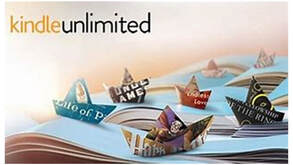 The pros and cons of enrolling books in Kindle Select, the Amazon programme behind KindleUnlimited (KU), are many. It is a constant subject of social media debate amongst Indie authors as to whether it is worth doing or not. But most Indie authors don’t know about the hidden secret behind KU which makes it a much more attractive proposition than you might think. But we’ll circle back to that later in the blog. We know that the amount paid by Amazon for Kindle Enrolled Normalised Pages (KENP) read is quite low. Depending on what price you sell your ebooks for, it could be as low as 10% of the royalties you receive for the sale of an ebook. Conversely it could be as high as 90%. It’s a difficult comparison to make because Indie authors sell their books for a far wider range of prices than trad publishers – anything from 99p to £9.99 or more (99c - $9.99). 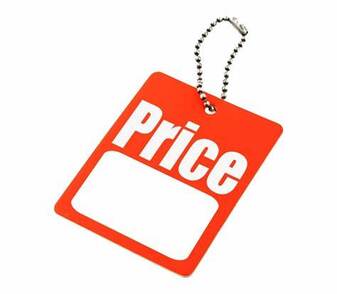 Our standard price point means that for a complete read of a book enrolled in Kindle Select we get about 50% of the amount we would if the book was purchased as an ebook. Compared to our paperbacks, KU downloads provide a slightly better return, as we have to keep our paperback prices low so we can be more competitive compared to trad publishers and therefore we receive lower royalties for paperbacks. One of the arguments against enrolment is that, under Amazon’s T&Cs for Kindle Select, you can’t “go wide”.  That is to say, you can’t distribute your books through other on-line retailers, such as Apple, Kobo, Barnes & Noble, Smashwords et al. Here we have a bit of a paradox, because Amazon’s market share for ebooks is around 67% (USA market). So, if you distribute through other channels you only get access to an additional 33% of the total US market. In the UK Amazon’s market share of the ebook market is 79%, which means “going wide” has the potential to reach only an additional 21%. So, what do you gain by “going wide?” Well, obviously you gain access to that wider ebook market. But access is not the same as sales.  To get those sales, you have to market to people who won’t see Amazon ads. Even if you market using universal book links which can direct readers to both Amazon and those wider markets, there is no guarantee that the reader will choose the wider market in preference to Amazon. Given that marketing on platforms other than Amazon is usually more expensive, you could be paying more for sales you would have got with Amazon Ads anyway. And of course we have to take paperback prices into account as well. Amazon’s economies of scale make them the most economic Print on Demand (POD) seller of paperbacks through the internet. None of the other on-line POD providers can get anywhere close to Amazon’s price structures. Whereas the printing costs from most other POD providers means setting a price much closer to that for physical bookshops, which loses you the competitive edge of selling online at a lower price. So, for readers who want to buy paperbacks on-line, Amazon is the first choice seller. At least, it is if they want buy their paperbacks for the lowest prices.  There are other business models of course. If you buy your own ISBN you can use distributors such as Ingram Spark to print and distribute your books, which means it is possible to get books into physical bookshops, which is an ambition for many authors. We have lost the chance to sign up some new authors because our business model doesn’t include distribution through physical book shops. You can even sell your books direct to the public yourself through sites such as Etsy, but they still require marketing if you want to direct readers to your Etsy store.. By going wide you can put your book out for free all the time through platforms such as Smashwords (permafree as it is known) which can sell you the other books in a series. Amazon doesn’t allow you to do that. But a permafree book doesn’t, itself, make you any money. So, there are solid arguments for not enrolling a book in Kindle Select – providing you can convert potential sales into actual sales.  We take a different view. We know that if a book is selling well as an ebook it will also be downloaded through KU. For the current month (July 2024) KU downloads are accounting for 46% of our total income. Based on an average number of KENP per book, the equivalent number of downloads for our books on KU exceeds the number of actual sales we make of those same books. OK, we don’t make so much money from those downloads, but we do make money. And our authors’ names are better known because their books are being read more widely. At the time of writing, we get the equivalent of 1.7 complete KU book downloads for every book we sell in ebook and paperback format combined. To put that in simple numbers, for every 100 ebooks/paperbacks we sell, we get 170 KU complete reads. Now, we have to ask ourselves – and you – how much more marketing would we have to do to sell 170 more books if we wanted to go wide and therefore didn’t enrol those books in Kindle Select? And, of course, marketing costs time and/or money.  Every click we get for an Amazon ad gives readers three buying options: ebook, paperback or KU. If we don’t enrol the books in Kindle Select and go wide instead, readers would only have two buying options: ebook or paperback. Even if our marketing is successful, with the market shares we have quoted above, for every hundred books we sell through Amazon it is unlikely that we would sell enough books through those other retailers, at a high enough price, to make up for the loss of the 170 equivalent book downloads we get through KU. OK, some of those wider channels also offer subscription library services similar to KU, but they are nowhere near as well subscribed as KU and they don’t pay any better.  And now to that secret we mentioned at the top of the blog. If your books are popular as ebooks, Amazon will actually recommend them to their KU subscribers. And the more ebooks you sell or are downloaded on KU, the more Amazon recommends your books, creating a virtuous circle. Basically, you are getting FREE advertising from Amazon – and let’s face it, they don’t give much away for free. KU subscribers get regular email recommendations and, of course, the books appear in the “recommended for you” listings specifically targeted at them. Yes, KU subscribers get their own recommendations listings because not all ebooks are enrolled in Kindle Select, so the standard "recommended for you" listings aren't suitable for KU readers because not all the recommendations will be available to them - and yours will be one of them if it isn't enrolled in Kindle Select. There are reasons why Amazon pushes KU subscribers towards the more popular books, which we won’t go into here. But one thing is for sure – if you aren’t enrolled in Kindle Select, you can’t benefit.  “But”, I hear you say, “To use KU the reader has to have a Kindle.” “To start with,” we reply. “Kindle is the most popular ereader in the world by a wide margin. But Amazon has thought of that, and the Kindle app allows readers to download books on any phone or tablet, turning them into Kindles as well. It’s been available for years!” Now, we aren’t being paid by Amazon to promote Kindle Select. We are just telling you what we have found and what we have calculated to be the better choice of sales channels for us based on real life data. We do “go wide” with some titles, but they are the ones we have found aren’t downloaded very often through KU, so there is no reason to keep those titles exclusive to Amazon. We don’t know why those books don’t appeal to KU subscribers. We do know that some genres do better on KU than others and that may be one of the reasons. Perhaps we need to do some research into that. But, until then, we lose nothing by going wide with those books. But for all the rest, we enrol our books in Kindle Select so that we can maximise the exposure we get for our authors, which also maximises the income that both we and our authors earn. For us, being enrolled in Kindle Select is a “no brainer”. If you have enjoyed this blog, or found it informative, then make sure you don’t miss future editions. Just click on the button below to sign up for our newsletter. We’ll even send you a free ebook for doing so. Note: The views expressed in this book review are those of the review's author, not necessarily those of Selfishgenie Publishing. No payments or inducements were received for this review and the author purchased the book at his own expense.  In my book reviews I only award 5 stars to books that have had some profound effect on me, so you can tell immediately that “Operation Ark” by Pen Farthing (full name Paul Pen Farthing) had that sort of effect and not always in a good way. Well, It did have some uplifting parts and I’ll get to them later, but mainly I read this book with horror that a lack of foresight and planning could lead to such tragedy. Because this is the story of real events that took place almost exactly three years ago . It is not the job of this review to editorialise about who might be to blame for what happened. However, should you choose to read this book, I am confident that you will be drawn to the same conclusions as me. Not only were these events disastrous for the country of Afghanistan, but they also ruined the life of a man who was trying his hardest to make something good come out of the chaos he was witnessing around him. The story starts in 2020 when President Trump signed a treaty with the Taliban for the final withdrawal of American troops from that country. He did so without consulting either the existing Afghan government or his allies in the west. In 2021 his successor, President Biden, implemented that treaty and ordered the withdrawal of American troops. Only he didn’t tell anyone on what date that would happen. "but hundreds of people died trying to flee the country" Unprepared for events, Afghanistan descended into chaos. What happened is a matter of public record, but hundreds of people died trying to flee the country and more have died since because they were denied the opportunity to get out before the Taliban completed their takeover of Afghanistan. I am referring to the Afghans who had worked with the western allies and therefore would be targeted by the new regime. Twelve American marines also died while trying to police the crowds at Kabul airport, when a suicide bomber set off his device. Against this background a former Royal Marine turned charity worker decided that the animals he and his team had rescued would not fare well under the new regime and he must do whatever he could to get them out of the country. His staff of dedicated veterinarians and animal welfare workers had close ties to the western allies and so they were considered to be vulnerable and everything possible had to be done to help them leave the country as well This should have been a simple matter. 1. Apply for permission for the Afghan charity workers to enter a safe country, namely the United Kingdom, demonstrating why they were at risk. 2. Apply for import licences to the UK for the animals, providing medical certificates to prove they didn’t represent a health risk. 3. Arrange, at the charity’s expense, for a charter flight to land at Kabul airport to transport both the animals and the people. 4. Leave the country. "That Pen Farthing succeeded at all must be regarded as something of a miracle." Over the next couple of hundred pages the story of what really happened is told by the author. That simple four step process took almost 2 months to organise against a backdrop of chaotic local conditions and the inept British government and public servants. The charity’s chartered aircraft was one of the last to leave the country. That Pen Farthing succeeded at all must be regarded as something of a miracle. In the end, while he was able to get the animals out by air, the charity’s staff had to undertake a lengthy and dangerous cross country journey to leave the country through the border with Pakistan, which led to several more weeks of suffering for them. "a lie will run around the world while the truth is still tying its boot laces." But the worst, perhaps, was about to come, at least for Pen Farthing. The British government needed a distraction from their own incompetence and Pen Farthing was to provide that. His name was dragged through the mud in the British and international media through a series of carefully managed leaks to the press, accusing him of putting animals before people, endangering the lives of both Afghans and British soldiers. The accusations were false but as the old saying goes, a lie will run around the world while the truth is still tying its boot laces. Pen Farthing’s reputation has still not recovered. And that is before you take into account the cost to his personal life. I have fact checked as much of this book as possible to ensure that what Pen Farthing has said stands up under scrutiny. It does. After reading this book I wonder if the country I live in is the country I thought it was. I wasn’t present in Afghanistan during the events described, but the emotions this book raised in me make me feel as though I might have been. It certainly made me very angry at times. So, what was the uplifting part of the book referred to at the start of this review? It is the way that Pen Farthing and his team, some operating from distant locations around the world, managed to save the lives of so many animals and people. Whether you like animals or not doesn’t matter, because there are human stories to celebrate as well. This book should be a set text for leadership and teamwork training, but sadly Pen Farthing’s undeservedly damaged reputation will prevent it ever becoming that. I cannot recommend Pen Farthing’s book “Operation Ark” highly enough. To find out more about it, click here. If you have enjoyed this blog, or found it informative, then make sure you don’t miss future editions. Just click on the button below to sign up for our newsletter. We’ll even send you a free ebook for doing so.  When it comes to book marketing, it is never possible to do too much - but it is very easy to do too little. I was reminded of this on a couple of occasions recently, for different reasons. The first was when I attended a local writers’ group for the first time. I had wanted to join them for some time, but the meeting day always clashed with something else I do on the same evening. However, that week my normal activity was cancelled, so I went along. It was the sort of thing I had expected, with the writers reading out bits of their work and being given constructive feedback. All very pleasant and friendly. It was at the end of the evening when I found that nobody there was really thinking about basic marketing. I was asked for my contact details, so that I could be added to the email group. Everyone seemed surprised when I produced a business card with the Selfishgenie Publishing contact details printed on it. I expected to be handed cards in return but wasn’t. None of the dozen or so people present had that most basic marketing tool to hand. Not even the organiser! I commented on it and the attendees seemed bemused by the possibility that anyone outside the group would want to make contact.  “What do you do when people ask about your books?” I asked. “How will they know what name to search for on Amazon or wherever?” I could see from the puzzled faces that they didn’t get it. “Well, I tell them my name and my book title, and they remember, I suppose.” Someone replied. I wanted to say “But 30 seconds after you part, they will have forgotten both. But if they find your business card in their pocket, or purse, they will be reminded of you and may look you up then.” But I didn’t say that. I let the matter drop. I just hope that the expression on my face said enough to make the people think about investing a few pounds in the purchase of some business cards for future use. I have found that in the past many people have introduced themselves as “I’m a nurse/plumber/whatever” first and author or writer only as an afterthought.  But if you want to be taken seriously as an author you must first take yourself seriously. You are an author first and whatever else you do second. You are only doing that to pay the bills until you can give up being a plumber/nurse/whatever and write full time. And that means having a business card that says “author”, with the relevant contact details on it so that people remember who you are and look up you and your books, OK, not everybody will do that. Hand out 50 business cards and maybe only 4 or 5 of the recipients will actually look you and your books up. But that is 4 or 5 that wouldn’t have looked you up if they have forgotten your name 30 seconds after you have parted.  The second incident (two actually) was almost as bad, but this time the offender wasn’t standing in front of me at the time. I had just finished reading a book by an author I hadn’t read before. It was by an Indie author, as most of my reading is these days as I try to support Indie authors as much as possible and the best way to do that is to buy their books. The book was pretty good, and I was sorry it had finished. I knew the book was part of a series and I was keen to buy the next title. I was even more keen after I had read the preview chapter the author had inserted at the back of the book.  But when I went to click on the link to take me straight to the book’s page on Amazon …. it wasn’t there. Another simple marketing tool overlooked. The best time to sell one of your books to a reader is when they have just finished reading one of your books. There are a lot of psychological factors at work at that moment and it is important that the author makes them work in their favour. When a reader finishes a book that they have enjoyed they feel a sense of loss. It isn’t as severe as grief, but it is from the same source. They want to ease that feeling of loss and you, the author, can make that happen. It’s why we put sample chapters of our other books after the end of the story.  Strike while the iron is hot – get the reader when they are wanting more. But if you don’t include a link to where they can buy the next book, they’ll just say “I’ll look it up tomorrow.” The problem is that by tomorrow the feeling of loss has gone and they may already have started to read the next book in their TBR list, whether it is a paperback or an ebook. The moment has passed, and the sale may have been lost forever. Obviously, you can’t put a link in a paperback (but you can include the URL as ordinary text), but there is no excuse for not putting one in the ebook version. OK, if the next book hasn’t yet been published and isn’t even on pre-order, then you can’t put a link in. But you can go back and put the link in the moment the book does go on pre-order or is published. If you don’t write series, that’s OK. You just insert the link for the next book you published. Finally, there was the second sin that the same author committed.  There was no request for a review. We all know how important reviews are for authors when it comes to selling books. Some people always post them, some people never post them, but some people will post them if you give them a nudge in the right direction. Just a simple request along the lines of “Reviews are important to authors, so if you have enjoyed this book please post a review wherever you normally review the books you read”. You can even post a link to the sales page on Amazon (if that’s where you sell your books) just to be helpful. That’s all it takes.  We use a publication and marketing checklist when we prepare books for launch, just to make sure that we don’t overlook such simple things. We would recommend that you develop your own checklist so that you don’t forget the same little things. My takeaways from this blog are: 1. Everybody you meet is a potential new reader of your book(s). 2. Everybody you meet needs a way of remembering who you are, what your book is called and how to find out about your books, and 3. If someone has read your book, that is the time to persuade them to review it and to buy another of your books, so make it easy for them. And if you have forgotten, it isn’t too late to do it now. You may have lost sales in the past but that is no excuse to lose more in the future. As a well-known supermarket used to say in its adverts “Every little helps”. If you have enjoyed this blog, or found it informative, then make sure you don’t miss future editions. Just click on the button below to sign up for our newsletter. We’ll even send you a free ebook for doing so.  We blogged about Publisher Rocket a couple of years ago, but Dave Chesson, the man behind the product, has just released a brand new version and it is even more powerful for Indie authors than ever before. For that reason, we are bringing you this update. Unfortunately, along with its new features has also gone a price hike. It now costs $199 (special offer price, correct at time of writing) for a lifetime subscription (that’s about £155 for us Brits). Naturally, you have to sell more books to repay that investment. What must be borne in mind, however, is that the tools Publisher Rocket provides actually help you to sell your books, whether you advertise or not.  The key thing about publisher rocket is its ability to provide you with genre, competitor and keyword information that makes sure that your book not only appears in searches on Amazon, but it appears higher up the results list, so that it is more likely to be seen. It also makes advertising on Amazon a whole lot easier by providing you with keywords appropriate for your book, so your ads are seen by the right people – people who read books like the ones you write. It is able to do this because it makes use of Amazon’s search history data. That data is gold dust when it comes to both publishing and advertising books and we, as Indie authors and publishers, have no way to access it by ourselves.  Amazon has become very concerned about what is known as “customer experience”. Basically, how easy shoppers find it to use Amazon. Part of that experience is the customer’s reactions to seeing irrelevant products in search results. Seeing a dark fantasy novel appearing in a search for high fantasy is probably not something that most shoppers would worry about. But seeing a Regency romance novel appear in a search for high fantasy is likely to irritate customers. If it happens a lot, it will irritate them a lot. And that is why Amazon have introduced a major change into their advertising process. The relevance of keywords has never been more important. Having irrelevant keywords in your ads can cost you more money and they may result in you selling fewer books. This is the exact opposite of what many Amazon Ad gurus used to advise, which was basically to load up your ad with as many keywords as possible, even if they were only remotely connected to the genre of your book.  I’ll run through this briefly, but it is important. When you set up a “sponsored product” ad with Amazon, using your own list of keywords, Amazon now scans your book’s meta data* and gives the keywords a “relevancy score”. The better that score, the higher up the pecking order your ads will be placed when it comes to the bidding process that decides which ads are shown to the customer in response to a search.. When the bidding process is carried out, the higher the relevancy score, the more likely it is that your ad will be the one chosen. If Ad A and Ad B both have a maximum bid of 50c set, then the ad with the higher relevancy score will be the one that is shown to the customer. This helps Amazon to prevent irrelevant ads being shown to the customer, which annoys them. What this could mean is that ads with lower relevancy scores have to spend more money to win the bidding process. Depending on their maximum bid setting they may never be seen at all. And an ad that isn’t seen can’t sell your book.  As publishers we use Publisher Rocket a lot to help us find the right category listings for the books we publish, to find the right 7 keywords to put into the book’s meta data and to find the right keywords to use in our Amazon Ads. To indicate how useful this tool is, we’ll tell you what happened the first time we used one of the new features. Like a lot of authors, we have always struggled to find the right 7 keywords to put into the meta data for the books we sell. This is why we have found Publisher Rocket so useful, because it helps to take the hard work out of finding keywords. One of the new features allows us to do a “reverse search” to find books like our own, and then find the keywords that are helping those books to sell, so that we can use them too.  So, we pasted the ASIN for our book into the box in Publisher Rocket, then pasted in the 7 keywords that we had used in the meta data for the book when it was last uploaded. The app then provided us with a list of books that Publisher Rocket, using Amazon’s search data, thinks are similar to ours. We were very, very surprised to find that all the books that were provided for comparison were non-fiction. The reason that we were so surprised is because our book is fiction. Now, things aren’t as bad as they might seem, because the book has actually been selling as a result of the searches that it showed up in. But it could obviously have been doing better if it had shown up in searches for fiction rather than non-fiction. The next bit of the process was a bit more time consuming, but necessary.  To find comparable fiction books we had to go onto Amazon (using incognito browsing) and do searches of our own to find our direct competitors. Once we had found the right sort of book, we pasted its ASIN into Publisher Rocket so that it could do its magic. We needed to provide 3 ASINs from books by different authors, to give Publisher Rocket enough data to work with. We then got back a lengthy list of search terms that had been used to find the three books we had identified. After that it was just a case of picking the seven most relevant terms for our book and entering them into the meta data and re-publishing it. So, if those same search terms are now used again by readers, our book will show up alongside those competitor books. But we didn’t stop there.  We run Amazon Ads for the same book and none of those keywords were included in the list of keywords for the ads. But now we were no longer limited to just seven selections, we could use more, which we did. So, in the space of about 20 minutes we were able to make both our meta data and our Amazon Ads more relevant and therefore more likely to be seen by the right readers - the readers that will actually buy the book. The most noticeable thing to be seen was that almost immediately we started to get more clicks on our ads. Quite clearly our book was now more relevant to the searches readers were doing. But more importantly, because the book was more relevant to the readers, more clicks were being converted to sales. Obviously, we can’t guarantee that you will experience similar results, but when marketing a book every little thing you do makes a difference and the most important thing to do when you launch a new book is to make sure that it is in the right categories and has the right meta data. If nothing else, Publisher Rocket will put you on the right path to success.  While we’re at it, we’ve discovered a way of getting 14 keywords into your meta data and it’s so simple we feel a bit stupid for not spotting it before. Most people set up their ebook before their paperback because it is less complicated and because an ebook can go on pre-order. The meta data for the ebook is then copied across to the paperback version’s meta data automatically when it is set up. Which means the same 7 keywords are copied across. But those keywords can be changed! Which means that you can use Publisher Rocket’s capabilities to use 7 different keywords for the paperback. Double the number of relevant keywords means double the chances of your books showing up in appropriate search results. The key messages for this blog are therefore: 1. The relevancy of the keywords in your meta data has never before been so important, 2. If you use Amazon ads, your ads may be more expensive and might not even be seen if your keywords aren’t relevant. 3. Finding more relevant keywords for your books is now much easier using the latest version of Publisher Rocket. To find out more about Publisher Rocket, click here On the website you can also gain access to a free course on using Amazon Advertising more effectively. You don’t have to buy Publisher Rocket, but you do have to subscribe (free) to the website.  And here’s a one time special offer for you as readers of this blog. If you don’t have Publisher Rocket, but would like to check the relevancy of you book’s keywords, we’ll run a free check for you. Just sign up for our newsletter (button below), then email us at [email protected] to claim your free relevancy check. You’ll get an email back from us asking you to provide some basic information about your book, so please check your spam folder to make sure you don’t miss it. You’ll also get the free ebook that we always give to new subscribers. * For those of you not sure what we mean by meta data, it is all the information you provide on the first page of KDP when you start to upload your book: Title, subtitle, blurb, categories and, of course, 7 keywords/phrases. FYI, a “keyword” can be up to 50 characters long.  There are so many new fads and trends in book marketing that we don’t always try them out when we come across them. We take a look at them, ask ourselves if they are really going to sell us more books and then decide if we are going to invest time on them or leave them until we have nothing more important to do. That was what happened when we received the email about the introduction of A+ content to Amazon sales pages way back in 2016 (was it really 8 years ago?). But we saw a video recently that made us go back and explore A+ content a little bit more to see what it might do for us.  Now, I’m not going to pretend that A+ content is going to propel your book sales into the stratosphere. But it may make a contribution towards moving some readers a little closer to buying your books. Its main advantages are that it is relatively quick and easy to use and, more importantly, it is free to use. First of all, what is A+ content? It is additional images and text that you can put onto the sales page of your book to either catch the reader’s eye or to provide additional information about the book. Why should you use it? It provides an opportunity to customise your sales page with additional images which can be used to fire up the reader’s imagination. Something got the reader to click through to the sales page, now you can present something even more exciting for them to look at. The images we have used below are for our Magi Box Set. How do you add A+ content on KDP? On your KDP bookshelf for the book, go to the actions button on the right hand side and click on the 3 dots (…) to get the drop down menu, then select “promote and advertise”. On the promotions page you will find the A+ content section lower down the page, beneath the advertising and Kindle countdown deals sections. Select the marketplace where you want the content to be displayed (for us that’s usually Amazon.co.uk) and then click on “Manage A+ Content” Amazon offers a lot of different layout options for the content, from product comparison displays or technical specifications to different layouts for images and text options. The most popular for books seems to be the type we have displayed above.  We use Bookbrush to create a lot of our images and they have a template that will produce the three sections from a single image. However, if you use other graphics packages they may also have suitable templates. If not, you may have to resort to cropping your images into separate portions. A+ content is uploaded into “modules” and the module we use is the ones titled “Standard Image & Dark Text Overlay”. Each of the 3 sections of the image is uploaded separately. This module offers the opportunity to include a headline and other text below the segment but, as you can see, we have incorporated our text into the images, so we just left the text boxes blank. You can use them or not. It’s entirely up to you. 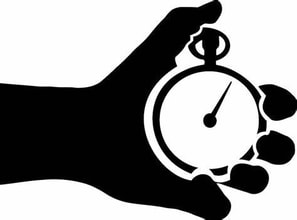 After that it is just a matter of assigning your content to the right book by pasting the ASIN into the relevant place, and then submitting the content for approval. Amazon suggests approval can take up to 7 days, but we have found that the A+ content is usually displayed on the sales page within 24 hours. Creating the images took us 10 minutes (using an existing image as our starting point) and creating the A+ content on KDP took us another 5 minutes, so this really is a quick and easy way of improving your sales page.  Aside: We used AI to create the image we have shown, and we make no apologies for that. It is the one place where we think AI can be of help to an author, by allowing them to create exciting imagery. Graphic designers may disagree with us, but we have to stick to tight budgets and AI allows us to do that.. As you apply the content to the sales page for a single market, it means you can use different content for different markets. For example, for Amazon.com you might want to use American spellings. For markets where English isn’t spoken, you can use images that use the appropriate language for the country – even if your book is only available in English. You can also use different images for different markets if you think that might affect sales. Images of scantily clad women or women with uncovered hair, for example, may not go down too well in some parts of the world. Amazon review quotes are great when included with A+ content, as shown in the image below. Firstly, the reader only has to scroll down the page a little bit to find the review from which the quote was taken. That makes the quote more trustworthy. Secondly, readers read what other readers recommend and you can't get better than a 5 star recommendation  Did using A+ content make a difference to sales? That’s hard to say. For the books where we added A+ content, we were already running advertising campaigns, so we don’t know what effect having the additional content had on sales. If the reader was responding to an ad, the A+ content may have helped to make the sale, or it may have made no difference. As we can’t get inside the mind of the readers we’ll never know. What we can say was that we started to use A+ content in June 2024 and we had our best sales ever that month. We aren’t going to try to claim a cause-effect relationship, but at the same time we don’t believe in coincidences. Maybe we got one extra sale thanks to A+ content, or maybe we got 100. Or maybe we didn’t get any additional sales and it was all down to the advertising campaigns we were running at the time. However, Amazon claims that having A+ content on a sales page can add between 3% and 10% to average sales volumes. As they are providing this facility for free, they must be making money from the use of A+ content from the extra sales or they wouldn’t be so generous. What we can say is that our A+ content added visual impact to our Amazon sales pages, and we think that is a good thing. We certainly think it is good enough to invest a few more blocks of 15 minutes’ worth of effort into the sales pages of our other books. If you have enjoyed this blog, or found it informative, then make sure you don’t miss future editions. Just click on the button below to sign up for our newsletter. We’ll even send you a free ebook for doing so.  We launched a new book, “Operation Chariot”, at the beginning of June this year. Given the popularity of our “Carter’s Commandos” series of books, we expected this new title to fly off the shelf, as fans of the earlier series came back to read this new offering. We were disappointed, The new book did sell, but not in the volumes we had expected. This puzzled us because we had put a lot of time and effort into marketing the book in advance of its launch. We were sure that the thousands of readers who had enjoyed Carter’s Commandos would be thrilled by this new book. So why wasn’t it selling as well as the Carter’s Commandos series, which is continuing to do well?  We checked the data from our marketing campaign and found that we were getting plenty of link clicks to the sales page. But the clicks weren’t converting to sales. Well, not as many sales as the number of clicks suggested we should be getting. If you are familiar with our previous blogs on marketing, you will know that we have always said that if you are getting link clicks but not getting sales, it means that there is something wrong with your book’s sales page. It might be your cover, it might be your blurb, it might be the reviews, or it might be the “free sample” as Amazon now call their “look inside” feature.  We analysed each of those four things in turn to see what might be putting readers off. We quickly ruled out a problem with the cover. The cover image has been used in all our marketing, so people have seen it already and clicked on the link. That is “social proof” (as it is known) that readers aren’t being put off by the cover, so seeing it again on the sales page is hardly going to put them off buying. This applies to the blurb too. The blurb is the primary text we use in our advertising, so if people have seen the cover image, read the blurb and then clicked the link, it means that the two things have encouraged the link click, not discouraged it. Reviews are a tricky one. This is a new book. It hadn’t been read before, so it doesn’t have any reviews. We’ll have to wait for the jury to return on that but at the time of writing this blog the book has garnered 5 "ratings", all of which are 4 or 5 star. So that just left the free sample.  We clicked on it and saw immediately what the problem was. The free sample opened up on the book’s “foreword”. This was a few paragraphs intended to introduce the reader to the new series, why it had been written and the differences in writing style that might be seen by readers of the “Carter’s Commandos” series. What it didn’t do, however, was get the reader engaged with the story. To get to that the reader had to scroll through the whole thing before they got to the proper opening of the book. Why was the free sample opening on the foreword and not on the first chapter? Because KDP and Amazon’s formatting engine interpreted the foreword as a chapter. So as far as Amazon was concerned, it was displaying the start of the story. Readers, however, could see that it wasn’t the start of the story and some of them were deciding not to scroll through to find the actual start. They just went back to scrolling through whatever platform they had been on before they clicked the link.  We had lost a potential sale. Worse than that, we had paid for a link click before we lost the sale! So, what could we do about that? The answer was simple, if a little unconventional. We moved the foreword from the start of the book to after the end. We even added a short explanation to it, to say why it was at the end and not the beginning. This only affects the Kindle version, of course. The paperback version still has the foreword at the beginning where it should be. But by the time the reader has discovered that, the book is in their hands, and they can flick past it if they don’t want to read it. But the free sample is always taken from the ebook version, so paperback readers will also be taken straight into the story when they read that.  Did it change anything? Yes it did. The sales graph for the book, which had been consistent but low, suddenly took a step upwards. More copies were sold each day from that point onwards. And it cost us nothing but a little bit of time and effort to find the reasons for the disappointingly low sales and to make the changes to the manuscript. So, if your sales aren’t doing as well as the link clicks from your marketing say they should be doing, why not take a look at the book’s free sample to see if the reader is being excited by what they see on the first page, or being bored by the non-essentials that are put into the opening pages of books. If you have enjoyed this blog, or found it informative, then make sure you don’t miss future editions. Just click on the button below to sign up for our newsletter. We’ll even send you a free ebook for doing so.  It is a worrying trend being seen on social media, for people to ask questions about how motivation to write is achieved, or how people make time for writing. Part of the reason it is worrying is that it is obvious that the person asking the question hasn’t done the slightest bit of research into what being a writer actually involves. They seem to think that you just sit down, start to write and a short while later you have a finished book to sell. Which means they are really looking for a quick way to make a buck and think that writing may be that way. Poor deluded fools. However, it is the questions around motivation that really puzzle me. The questioner seems to think that motivation comes from without and not from within.  Now, we know that part of the job of a leader is to motivate their team. Having attended (and tutored) numerous leadership courses in my time, I’m quite familiar with the concepts of leadership in terms of motivation within a workplace. For writers, however, there is no leader to provide motivation. It appears to me that the concept of people motivating themselves to do things is an idea that is dying out. Not completely, of course. Talk to any sports star and you will find self-motivation very high on their list of personal qualities. But in the wider world, where people work for vast corporations, it seems to be expected that motivation is something that will be provided by the company, just like they provide toilet facilities. But that is where the world of the Indie author is so different from so many other professions.  There are many types of writer and, for some of them, if they don’t write they don’t get paid. That is probably motivation enough. Some may also lose their jobs if they don’t produce high enough quality writing. Again, it’s a strong motivation to perform well. But for the Indie author, if they don’t write then nothing happens. They don’t get paid, but they weren’t getting paid anyway, at least, not for writing. They can’t be sacked because no one employs them as an author. But the one sure sign that you are an author is that you can’t NOT write. You have to tell the story. You don’t need any other motivation. A real author would never ask on social media “I write a couple of hundred words, then I run out of motivation. How do you keep going?” If you have ever said that, or thought that, then you are not an author. At best you are a wannabe who wants the “glory” of being an author but doesn’t want to actually do any writing.  The same applies to the question of time management, which is really a sub-set of motivation. A real writer always finds time to write, be it formally at a desk, or on the fly while waiting for a bus. They could plan their time better, so they could get more writing done, but they find the time anyway. But the most fundamental thing about time management for Indie authors is being prepared to sacrifice something else in order to make time for writing. Let me use an analogy. If someone wants to be a footballer, their coach will expect them to put in a number of hours each week at practice, honing and developing their skills. If they aren’t prepared to put in the time, their coach will be very blunt with them and tell them they’ll never make it as a footballer because they aren’t prepared to put in the time.  If the footballer says they don’t have time to attend practice, their coach will tell they have to make time, otherwise they are out of the team. And any real footballer would understand that. If you want to make it big, you have to be prepared to focus your whole life around what you want to do. But writers don’t have coaches, in that sense. No one is standing over them telling them they have to practice their writing for the next two hours or they’re going to be dropped from the writing team. But if they are really a writer, they don’t need to be told that anyway, because there is nothing they would rather be doing than writing. So, if you can’t think of a single thing that you would be prepared to drop from your life so that you have more time to write, then you probably aren’t a writer. And yes, that may mean not seeing friends so often, or not watching so much TV or not going to the movies. It may even mean not playing football. But a real writer won’t notice the sacrifice they are making because what they really want to do is write.  So, to summarise. If you have to ask “How do you make time for writing?” you may not be a writer. If you have to ask “How do you maintain your motivation for writing?” you almost certainly aren’t really a writer. But, if you are sat at a bus stop hoping that the bus will be delayed for a few more minutes so you can complete the paragraph you are working on, then you may be a writer, because you are both motivated and you have made time for your writing. However, for those of you that may still be having doubts, I’ve devised this short Q & A to help you decide.  Q1. You are working on a tricky bit of dialogue for your book and your baby starts crying. Do you a. Stop what you are doing and go and see to the baby, or b. Go to the coffee shop so you can work undisturbed? Q2. You have had a long hard day at work, when you get home do you a. Open a bottle of wine/beer/whisky, and sit down in front of the TV while you drink a glass, or b. Sit down and start working on your book? Q3. Your favourite music act is appearing in town, and you have been offered tickets to their show. Do you a. Take the tickets and go to see the show, or b. Turn down the tickets because you want to get started on the next chapter of your book? Q4. Your grandmother’s funeral has been scheduled for the only day that week when you can devote some time to your writing. Do you a. Go to the funeral, or b. Go to the funeral but take your laptop and hope you can sit at the back and do some writing at the same time? Q5. Your partner has won a holiday for 2 at your dream destination, but the dates are for the same week that you were going to attend a writers’ retreat. Do you a. Go on holiday with your partner, or b. Go on the writers’ retreat? ANSWERS 5 b’s. There is no point in fighting it, you are a writer. 4 b’s. You are probably a writer, but you are easily distracted. 3 b’s or less. Sorry, you’re just a wannabe writer. Note: The above questions and answers are not to be taken too seriously, but if you found yourself seriously considering answering b to all the questions, then you really are a writer. We certainly don’t advocate leaving your baby to cry while you go to the coffee shop to write. No, really, that is not a good thing to do. If you have enjoyed this blog, or found it informative, then make sure you don’t miss future editions. Just click on the button below to sign up for our newsletter. We’ll even send you a free ebook for doing so.  Writer’s groups on social media are very popular, and quite rightly so. Writing is, by its nature, a solitary life so it is nice to know that you aren’t alone. A real life writer’s group is better, but if you don’t have regular access to one of those, social media provides a useful alternative. People use writer’s groups to seek advice on a wide range of topics: writing techniques, gaining feedback on their work and, the reason behind this blog, they seek advice on book marketing. 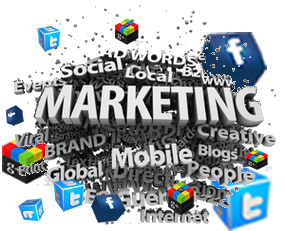 The problem with seeking advice on marketing on social media is that it as an extremely wide ranging subject and few writers have the knowledge and experience to more than scratch the surface. That means that the person seeking advice tries out a few approaches, many of them the same ones as everyone else is using, and some of the most basic techniques are by-passed because the people using social media don’t know enough about the subject.  As with any subject, you have to understand the basics if you want to understand how to apply the techniques. To use a metaphor, if you don’t know how the internal combustion engine works, you will never get as far as diagnosing a blocked carburettor as being the reason why your car won’t start. The same applies to book marketing. If you don’t understand the basics, you’ll never understand why all the things you are doing to promote your books aren’t working or, at least, not working as well as they might. As an example, some authors never get as far as understanding that using social media as a marketing channel isn't about plugging your book all the time. It's about building relationships with readers so that they want to know about your books.  As professional book marketers (that’s what publisher are, really) we contribute to those social media groups when we think we can offer good advice and we stay quiet if we aren’t so sure. One of the bits of advice we offer on a regular basis is to study marketing properly. Marketing of any product needs a wide range of skills and knowledge. Within marketing itself the professionals tend to specialise in certain areas and hardly scratch the surface in others. If they need a specialist in an area they aren’t so well versed in, they seek one out. So, for amateurs, it is even harder to know where to concentrate their efforts. 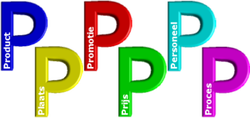 Marketing is a subject that continues to evolve. The “marketing mix” as it is known (aka the 5Ps, 6 Ps, 7Ps or even more Ps depending on who you listen to), first started to be discussed in the 1940s, long before Tim Berners-Lee came up with the idea for the internet, so marketing has had to adjust to cope with new technology while at the same time having to continue to deal with physical marketplaces such as bookshops. Take the P for People heading. This used to mean the people who sold the product – their recruitment, training, personalities, product knowledge and sales skills. But so much of our modern marketplace is now on-line, where people play almost no part in the sales. We have to hope that the website designers know what they are doing as they are now the people who influence the direct sales. The real salesperson is now the author or publisher, as they decide what words and images to use on the product page. Never before has cover design, for example, been so important in selling a book (that's covered by another of the Ps: Product). The P for People topic is now more about who reads the books – the demographics of particular genres, or “who reads what”.  If you are putting a book on the shelves of bookshops then you don’t have to worry about that so much. Books sellers have their stores laid out in subject order and people of the appropriate age, gender and interests know where to find the books they like. But if you are trying to promote a book on social media you have to know where on social media your target audience is likely to hang out. That’s the opposite of the bookshop. Which is why asking for marketing advice on social media isn’t really going to help an Indie author. Let’s face it, if you are asking a question on Facebook and it is being answered on Facebook, then the chances are that the person answering the question probably knows quite a lot about Facebook, but probably doesn’t know much about how to market on TikTok or Instagram. For the modern marketplace, the Indie author has to be almost as knowledgeable about marketing as his counterpart in one of the Big 5 publishing houses. And to become that knowledgeable requires proper study, not asking a few random questions on social media.  I’m not talking about a full 3 year course of study at a university (though it would be great if you can afford the time and money to do it), but I am talking about study of some sort (don’t worry, I’m not going to try to sell you a marketing course, because we don’t sell one). One of the owners of Selfishgenie Publishing has a Masters Degree in business management. He knows quite a bit about marketing. But when he decided to set up the company he didn’t realise how much more he was going to have to learn. In the few years that elapsed between him picking up his MBA certificate and setting up the business, the whole world of marketing had moved on. The internet was now King (or Queen if you prefer, or even President). What worked for business in the early years of the new millennium was no longer working. That meant he had a lot of catching up to do, so he did what any sensible person would do and went back to school. Not full time residential school, but part time online learning. And if you need to learn about marketing, that is what you have to do too.  Some people are reluctant to go back to school, however. We can’t understand why. You are not a failure just because you don’t know something. In fact, it is a mark of maturity to be able to admit that you don’t know some things, especially if they're in an area that you have never studied. Besides, only you know that you are studying, unless you choose to tell the world. Yes, it can cost money – but it doesn’t have to. There are organisations that provide free training and at the end of this blog we will provide a link to one of them. And you can sign up from anywhere in the world. OK, you can ask questions on social media and the answers may sell you a few books, but they will never sell you as many books as a fully developed marketing strategy, backed up by a plan and the knowledge and resources to deliver it.  That can only come from in depth knowledge of the subject. So, if you want to climb the ladder of success to become a bestselling author, we advise going back to school. For information on free online training courses in marketing, click here. If you have enjoyed this blog, or found it informative, then make sure you don’t miss future editions. Just click on the button below to sign up for our newsletter. We’ll even send you a free ebook for doing so. |
AuthorThis blog is compiled and curated by the Selfishgenie publishing team. Archives
June 2025
|
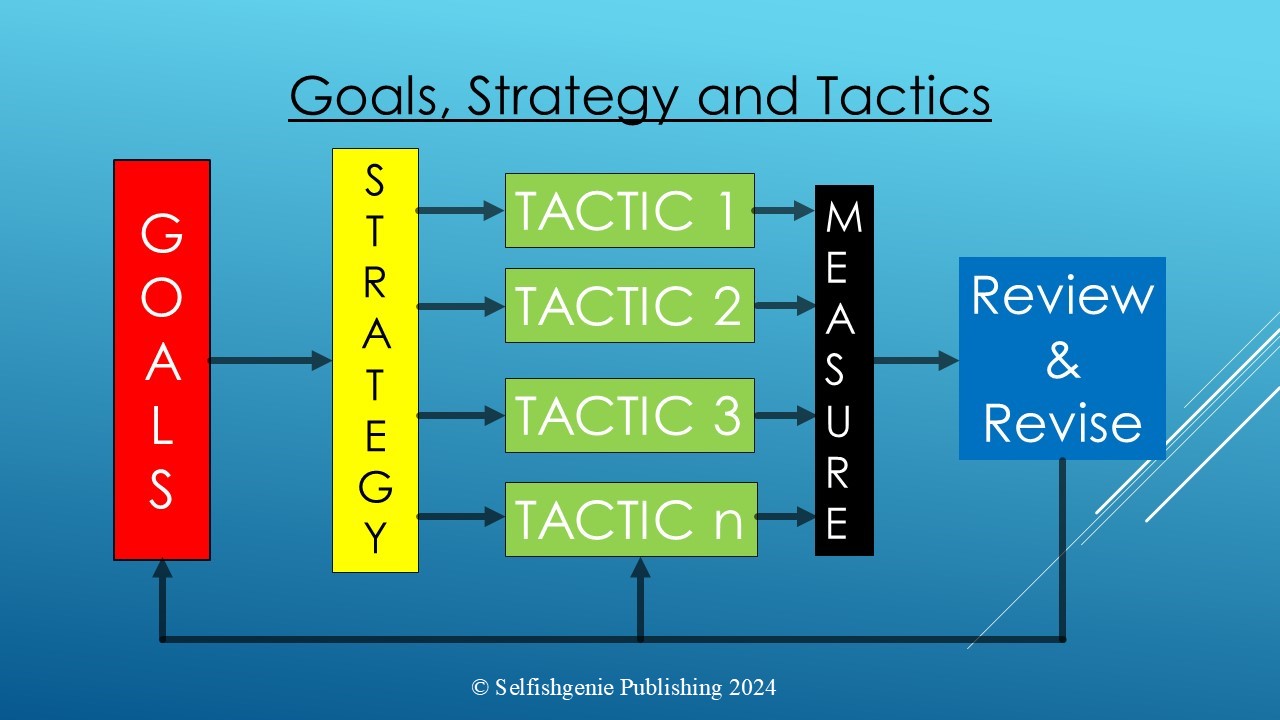






 RSS Feed
RSS Feed